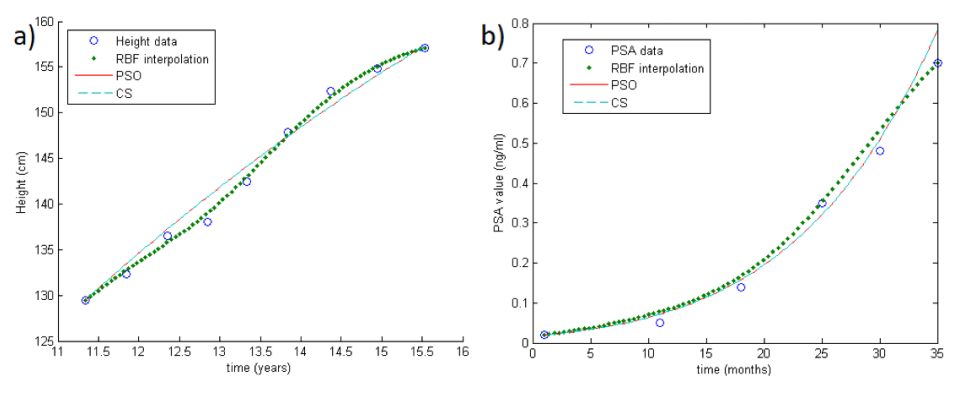Difference between revisions of "Template:Article of the week"
From LIMSWiki
Jump to navigationJump to searchShawndouglas (talk | contribs) (Updated article of the week text.) |
Shawndouglas (talk | contribs) (Updated article of the week text.) |
||
| Line 1: | Line 1: | ||
<div style="float: left; margin: 0.5em 0.9em 0.4em 0em;">[[File: | <div style="float: left; margin: 0.5em 0.9em 0.4em 0em;">[[File:Fig1 Stura EpidemBiostatPubHealth2018 15-2.png|240px]]</div> | ||
'''"[[Journal: | '''"[[Journal:A new numerical method for processing longitudinal data: Clinical applications|A new numerical method for processing longitudinal data: Clinical applications]]"''' | ||
Processing longitudinal data is a computational issue that arises in many applications, such as in aircraft design, medicine, optimal control, and weather forecasting. Given some longitudinal data, i.e., scattered measurements, the aim consists in approximating the parameters involved in the dynamics of the considered process. For this problem, a large variety of well-known methods have already been developed. Here, we propose an alternative approach to be used as an effective and accurate tool for the parameters fitting and prediction of individual trajectories from sparse longitudinal data. ('''[[Journal:A new numerical method for processing longitudinal data: Clinical applications|Full article...]]''')<br /> | |||
<br /> | <br /> | ||
''Recently featured'': | ''Recently featured'': | ||
: ▪ [[Journal:Big data management for healthcare systems: Architecture, requirements, and implementation|Big data management for healthcare systems: Architecture, requirements, and implementation]] | |||
: ▪ [[Journal:Support Your Data: A research data management guide for researchers|Support Your Data: A research data management guide for researchers]] | : ▪ [[Journal:Support Your Data: A research data management guide for researchers|Support Your Data: A research data management guide for researchers]] | ||
: ▪ [[Journal:CÆLIS: Software for assimilation, management, and processing data of an atmospheric measurement network|CÆLIS: Software for assimilation, management, and processing data of an atmospheric measurement network]] | : ▪ [[Journal:CÆLIS: Software for assimilation, management, and processing data of an atmospheric measurement network|CÆLIS: Software for assimilation, management, and processing data of an atmospheric measurement network]] | ||
Revision as of 18:06, 10 December 2018
"A new numerical method for processing longitudinal data: Clinical applications"
Processing longitudinal data is a computational issue that arises in many applications, such as in aircraft design, medicine, optimal control, and weather forecasting. Given some longitudinal data, i.e., scattered measurements, the aim consists in approximating the parameters involved in the dynamics of the considered process. For this problem, a large variety of well-known methods have already been developed. Here, we propose an alternative approach to be used as an effective and accurate tool for the parameters fitting and prediction of individual trajectories from sparse longitudinal data. (Full article...)
Recently featured:










